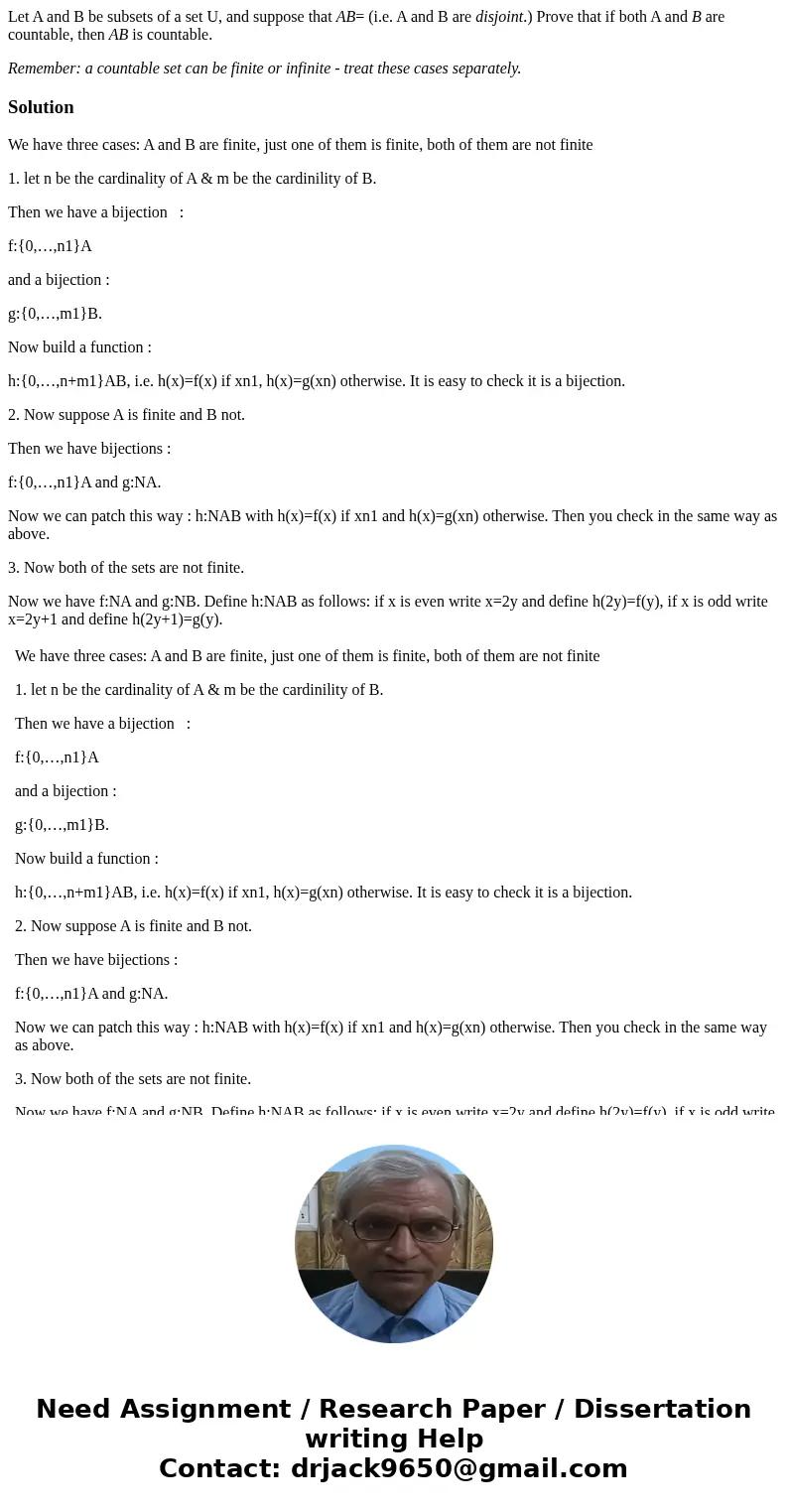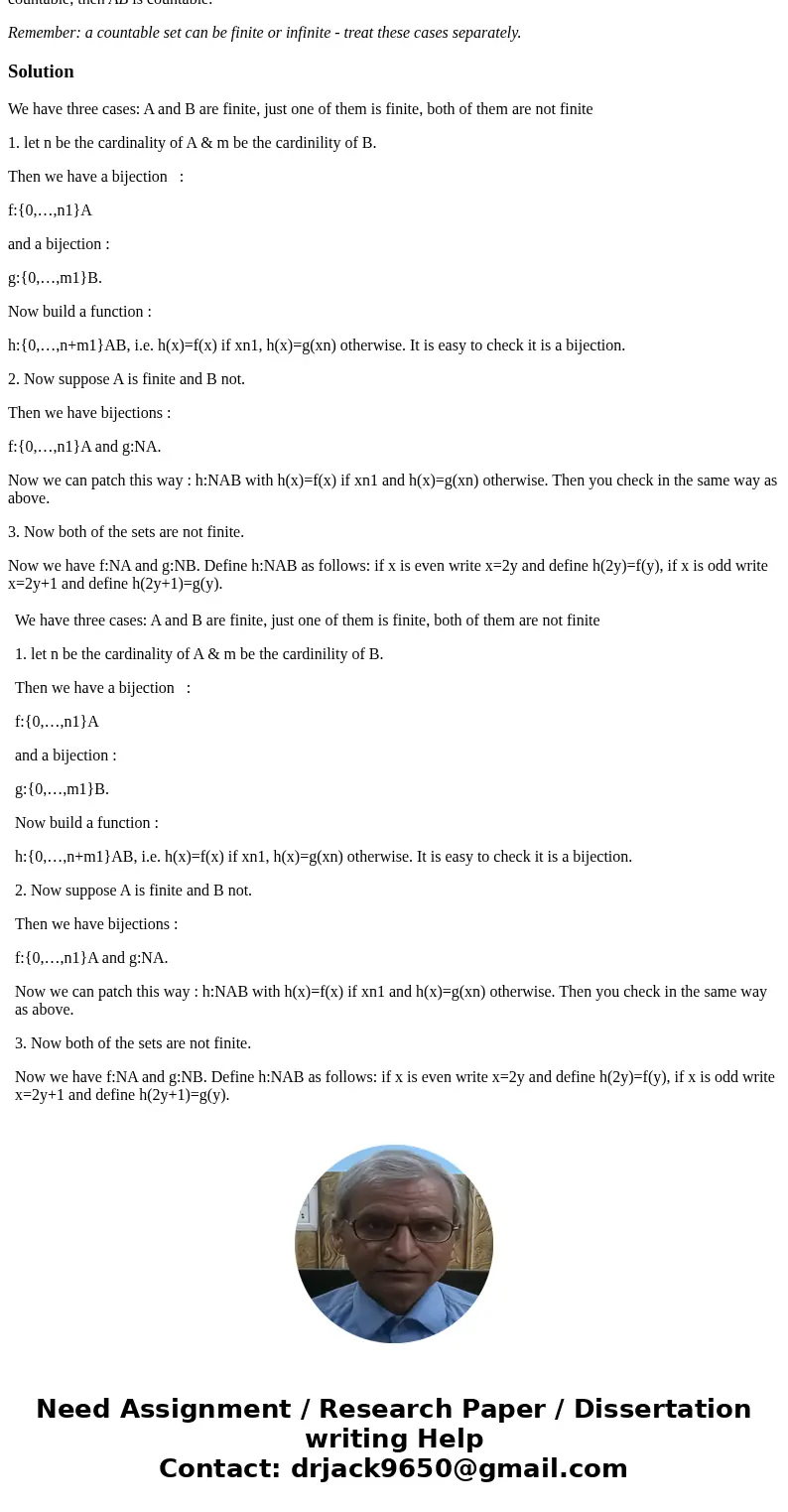Let A and B be subsets of a set U and suppose that AB ie A a
Let A and B be subsets of a set U, and suppose that AB= (i.e. A and B are disjoint.) Prove that if both A and B are countable, then AB is countable.
Remember: a countable set can be finite or infinite - treat these cases separately.
Solution
We have three cases: A and B are finite, just one of them is finite, both of them are not finite
1. let n be the cardinality of A & m be the cardinility of B.
Then we have a bijection :
f:{0,…,n1}A
and a bijection :
g:{0,…,m1}B.
Now build a function :
h:{0,…,n+m1}AB, i.e. h(x)=f(x) if xn1, h(x)=g(xn) otherwise. It is easy to check it is a bijection.
2. Now suppose A is finite and B not.
Then we have bijections :
f:{0,…,n1}A and g:NA.
Now we can patch this way : h:NAB with h(x)=f(x) if xn1 and h(x)=g(xn) otherwise. Then you check in the same way as above.
3. Now both of the sets are not finite.
Now we have f:NA and g:NB. Define h:NAB as follows: if x is even write x=2y and define h(2y)=f(y), if x is odd write x=2y+1 and define h(2y+1)=g(y).
| We have three cases: A and B are finite, just one of them is finite, both of them are not finite 1. let n be the cardinality of A & m be the cardinility of B. Then we have a bijection : f:{0,…,n1}A and a bijection : g:{0,…,m1}B. Now build a function : h:{0,…,n+m1}AB, i.e. h(x)=f(x) if xn1, h(x)=g(xn) otherwise. It is easy to check it is a bijection. 2. Now suppose A is finite and B not. Then we have bijections : f:{0,…,n1}A and g:NA. Now we can patch this way : h:NAB with h(x)=f(x) if xn1 and h(x)=g(xn) otherwise. Then you check in the same way as above. 3. Now both of the sets are not finite. Now we have f:NA and g:NB. Define h:NAB as follows: if x is even write x=2y and define h(2y)=f(y), if x is odd write x=2y+1 and define h(2y+1)=g(y). |


 Homework Sourse
Homework Sourse